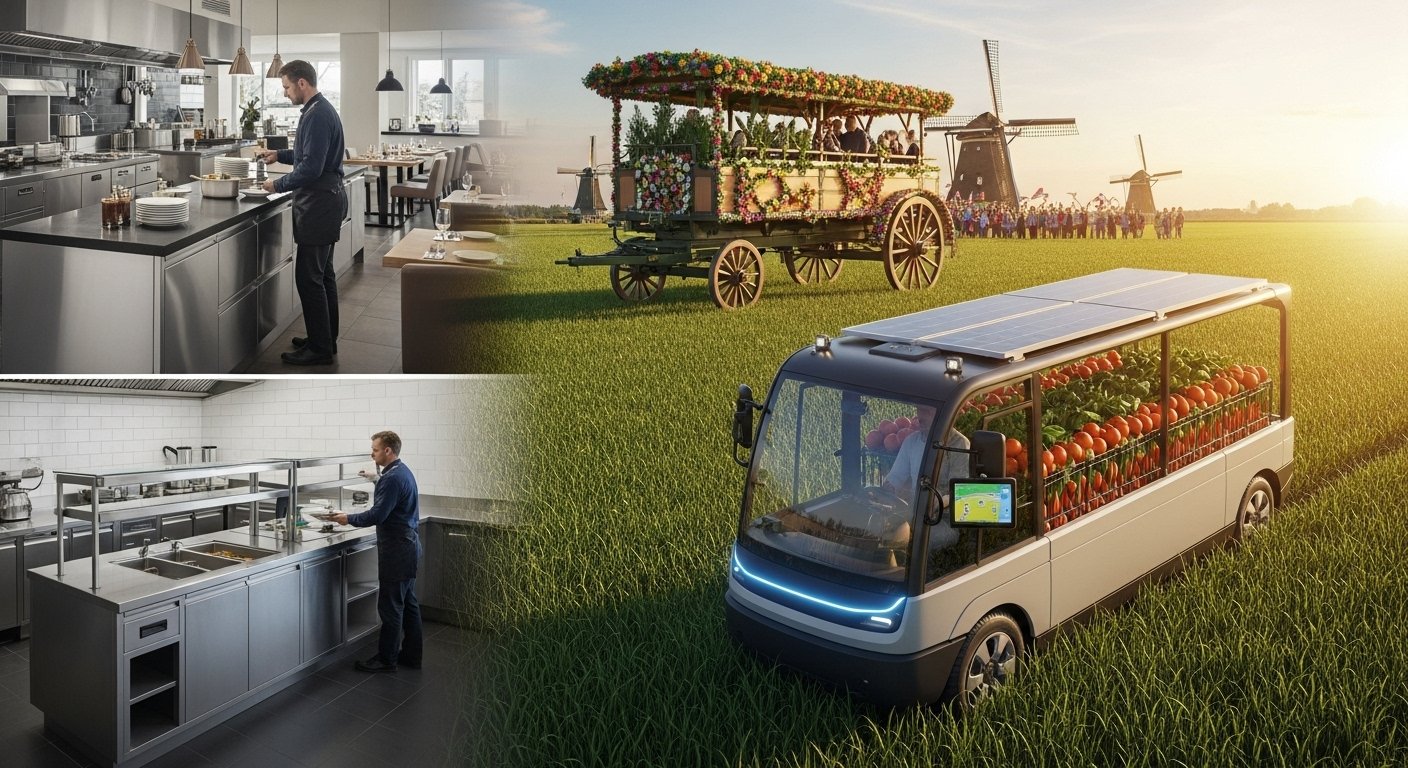Afruimwagens are specialized vehicles or clearing carts designed to streamline the process of transporting and removing materials, derived from the Dutch word “afruimen,” which means “to clear” or “to remove.” These robust tools play a pivotal role in modern efficiency by blending time-honored traditions with cutting-edge technology, making them indispensable in various sectors.
In today’s fast-paced world, afruimwagens are trending due to their remarkable versatility—they excel in agriculture for hauling crops and manure, in horeca (hotels, restaurants, and catering) for clearing dishes and supplies, in construction for moving debris, and even in urban waste management. What makes them stand out is their ability to adapt to diverse needs, from rugged fields to bustling kitchens.
In this guide, we’ll delve into their key benefits like enhanced productivity, unmatched durability, and contributions to sustainability, showing why investing in an afruimwagen could transform your operations and hook you on their practical genius.
What Are Afruimwagens?
Afruimwagens are robust machines and workhorses specifically engineered for transporting goods, crops, manure, silage, dishes, or waste with exceptional efficiency. At their core, they are specialized wagons or trolleys that go beyond basic carts, featuring powerful engines (in larger models), sturdy build quality for heavy-duty use, and versatile attachments such as plows, trailers, or hydraulic tippers to handle challenging terrains.
Unlike standard trolleys or wagons, which are often limited to simple pushing or pulling, afruimwagens incorporate advanced features like even distribution mechanisms for spreading materials and ergonomic designs for ease of use. For comparison, while utility vehicles might focus on general transport, afruimwagens emphasize clearing and organization—think of them as the Swiss Army knife of material handling, distinguishing themselves in both agricultural and hospitality contexts by reducing labor and boosting workflow.
Explore More Topic: Primerem
The History and Evolution of Afruimwagens
The story of afruimwagens begins centuries ago, rooted in ancient customs and agricultural traditions across regions like the Low Countries (Netherlands and Belgium) and parts of Africa. Initially, these were simple wooden carts, often pulled by livestock such as horses or oxen, used to transport hay, straw, crops, or other goods during harvest times.
They held deep historical significance, serving not only practical roles in commerce and transportation but also cultural ones, symbolizing resilience, ingenuity, and communal pride in rural communities. These carts were integral to festivals, rituals, and trading routes, often adorned as cultural relics to reflect social standing.
With the advent of industrialization, afruimwagens evolved dramatically. By the 19th and 20th centuries, basic designs crafted from locally available materials gave way to more durable constructions using steel frames and pneumatic tires, improving performance and fuel efficiency. The introduction of hydraulic systems and engine improvements in the 20th century marked a turning point, enabling afruimwagens to handle heavier loads and operate on challenging terrains.
Today, modern advancements have brought lightweight materials like aluminum alloys, electric motors for eco-friendly operations, and smart technologies such as GPS tracking and AI-based route optimization. This evolution reflects a broader shift toward sustainable and efficient practices, transforming afruimwagens into indispensable tools across agriculture, hospitality, and urban logistics, while preserving their historical essence as symbols of resourcefulness.
Types of Afruimwagens Available
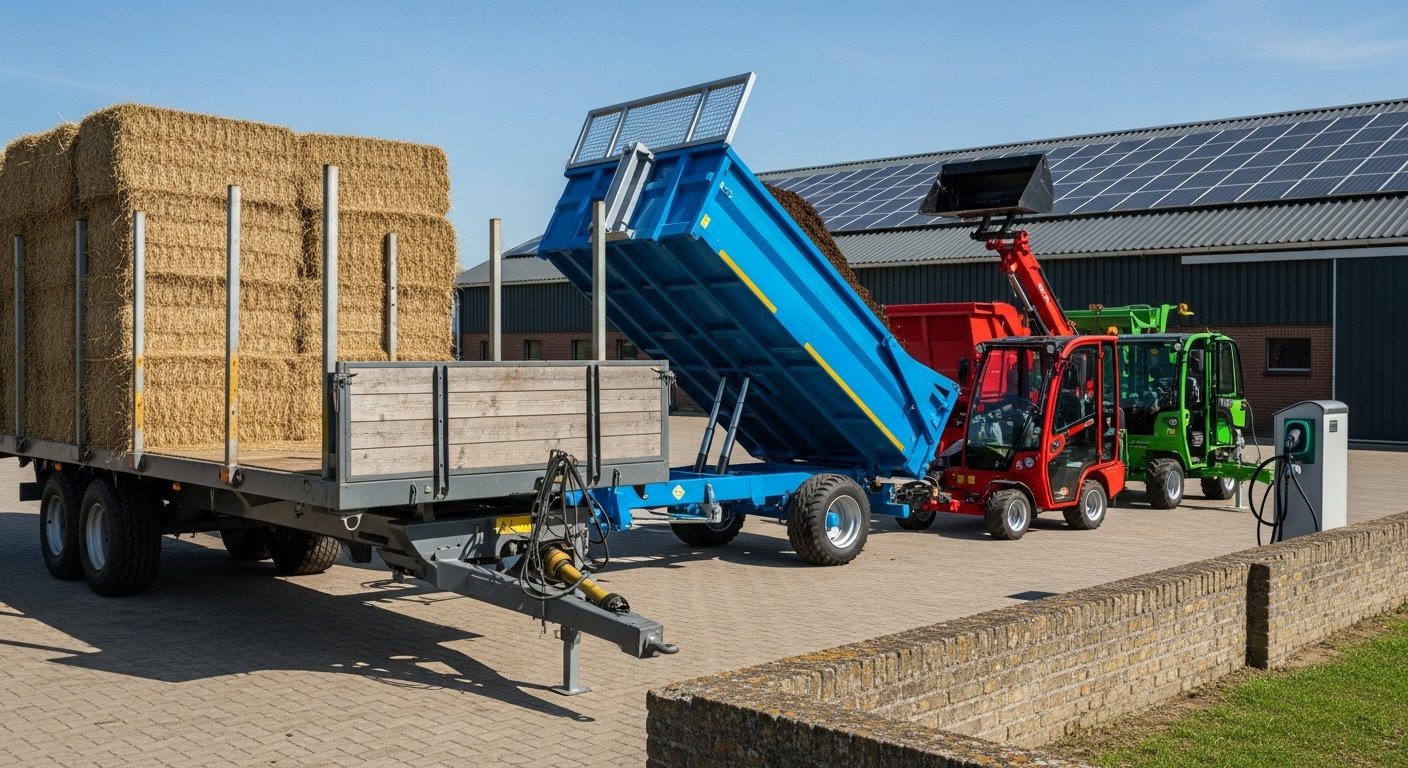
Afruimwagens come in a variety of models tailored to diverse needs, sizes, and sectors, making them highly adaptable for specific tasks across industries. Below is an overview of the main types, each designed to optimize efficiency in unique applications, from agriculture to hospitality and beyond.
1. Standard/Flatbed Afruimwagens:
These are built for general transport, offering ample space for hauling crops, equipment, or materials across fields. Their sturdy build and large wheels ensure stability on uneven terrains, making them ideal for farms and construction sites.
2. Tipper/Hydraulic Afruimwagens:
Equipped with a hydraulic tipping mechanism, these wagons excel at unloading bulk commodities like grains, fertilizers, manure, or silage quickly and efficiently. They’re perfect for agricultural tasks requiring rapid material distribution.
3. Compact Afruimwagens:
Designed for smaller-scale operations, these lightweight models offer maneuverability in tight spaces, such as urban settings or confined farm areas. Their foldable parts and adjustable shelves enhance versatility for smaller tasks.
4. Utility/Multifunctional Afruimwagens:
These feature swappable attachments for tasks like plowing, harvesting, tilling, planting, or spreading. Used in agriculture, industrial settings, hospitality, and even electric models, they adapt to multiple roles with modular designs.
5. Specialized Types:
This category includes manure/silage wagons for livestock farming, service/clearing carts for horeca (hotels, restaurants, catering) to transport dishes or supplies, parade/symbolic wagons for cultural events, and eco-friendly electric/hybrid versions for waste collection or urban use.
| Type | Best For | Key Features |
|---|---|---|
| Standard/Flatbed | Farms, construction | Large capacity, rugged terrain stability |
| Tipper/Hydraulic | Agriculture, waste management | Hydraulic tipping, bulk unloading |
| Compact | Urban, small farms | Lightweight, maneuverable, foldable |
| Utility/Multifunctional | Versatile operations | Swappable attachments, GPS integration |
| Specialized | Horeca, events, eco-friendly | Stainless steel, electric motors, modular |
Key Features and Design Innovations
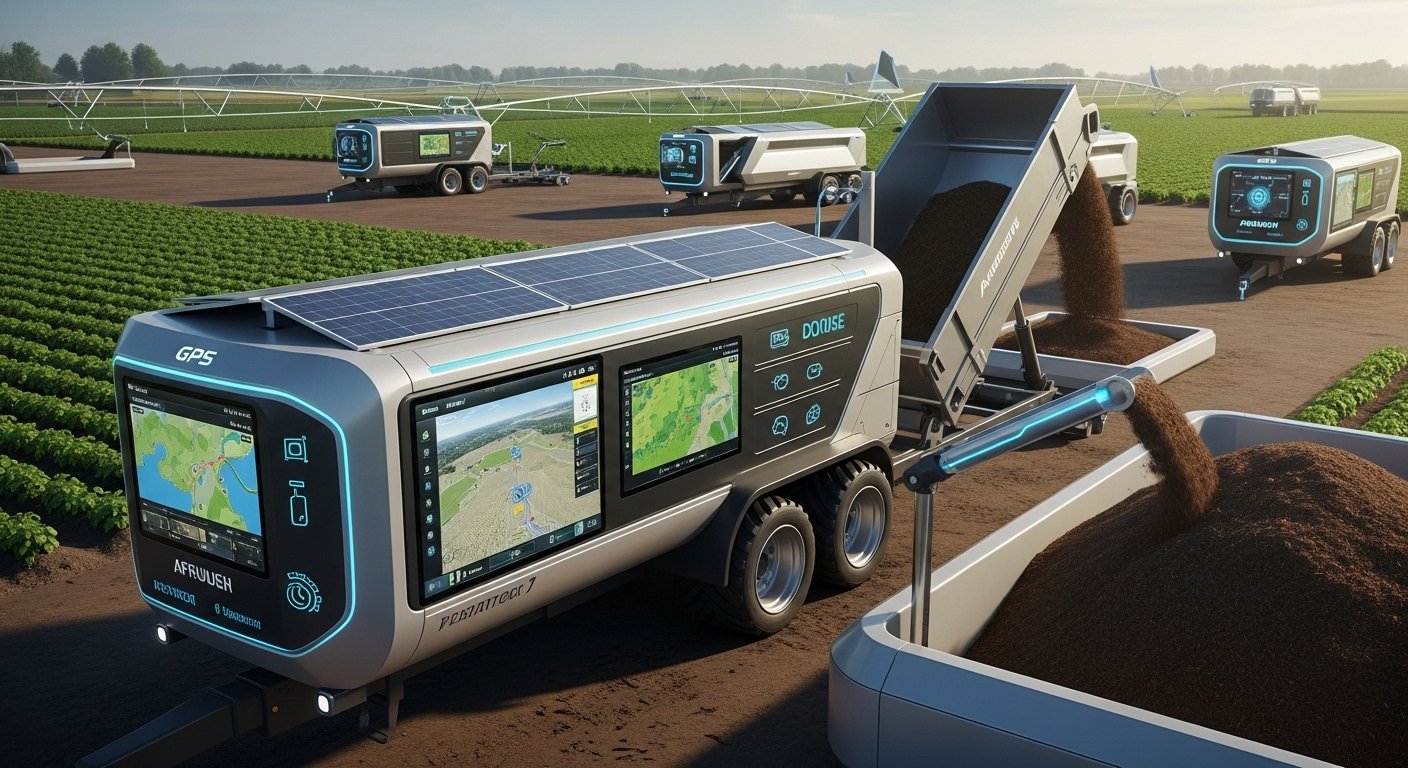
Afruimwagens are engineered with advanced features that enhance their functionality, durability, and adaptability across diverse applications. These design innovations set them apart as modern solutions for agriculture, hospitality, construction, and urban management.
1. Robust Construction:
Built with durable materials like high-grade steel frames, aluminum alloys, and impact-resistant plastics, afruimwagens are designed to withstand harsh environmental conditions and heavy-duty usage. Reinforced frames and advanced suspension systems ensure longevity and stability, even when navigating rugged terrains or carrying heavy loads.
2. Mechanical Elements:
Strong wheels with enhanced traction, reliable brakes, and robust axles allow smooth operation on uneven surfaces. Ergonomic designs, such as adjustable seating, handles, and control placements, reduce operator fatigue and improve usability, making them ideal for prolonged use in demanding settings.
3. Technological Integrations:
Modern afruimwagens incorporate cutting-edge technology, including GPS tracking for precise navigation, smart sensors for real-time load monitoring, and AI-based route optimization for efficient logistics. Hydraulic lifts, electric motors, and even solar charging panels in eco-friendly models further boost performance and sustainability.
4. Customization Options:
Modular bins, detachable trays, height adjustments, and foldable components allow afruimwagens to be tailored for specific tasks. Configurations like towing capacity adjustments or specialized attachments (e.g., plows, seeders) make them versatile for agriculture, horeca, or industrial needs.
These features combine to make afruimwagens not just vehicles but smart, reliable tools that maximize productivity and adapt to modern operational demands.
Benefits and Advantages of Using Afruimwagens
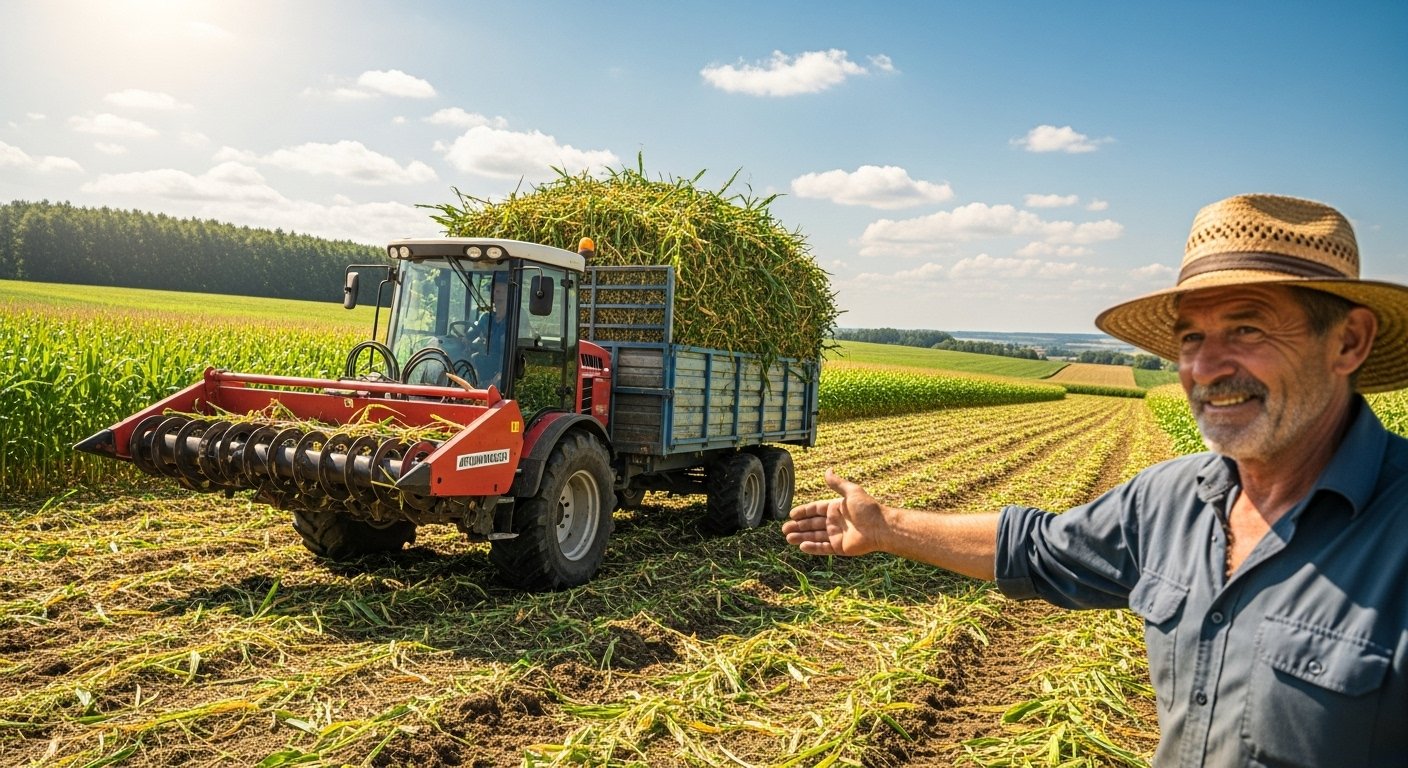
Afruimwagens offer a wide range of benefits that make them indispensable across industries, delivering efficiency, durability, and versatility while addressing modern operational challenges. Here’s a detailed look at their advantages:
1. Efficiency and Productivity:
Afruimwagens streamline operations by conserving time and energy. They enable faster transportation of goods, such as crops from fields to markets or dishes in busy restaurants, reducing labor expenses and boosting output. For example, farmers report up to 30% higher yields due to quicker workflows.
2. Durability and Reliability:
Constructed with durable materials like steel and aluminum, afruimwagens resist wear, tear, corrosion, and rigorous use. They handle heavy loads and harsh weather, ensuring long vehicle lifespans with minimal maintenance costs, making them a reliable choice for tough conditions.
3. Versatility:
These vehicles excel in multiple sectors—agriculture, construction, horeca, tourism, and urban waste management. With adaptable attachments for tasks like tilling, planting, harvesting, or material handling, they meet diverse needs, from hauling manure to clearing tables.
4. Safety and Ergonomics:
Designed to reduce physical strain, afruimwagens feature ergonomic handles, adjustable seating, and enhanced braking systems to prevent accidents. Stability controls and reflective surfaces ensure safe operation in challenging terrains or crowded environments, minimizing operator fatigue and injuries.
5. Cost-Effectiveness:
By lowering operational costs through fuel efficiency (especially in electric models) and fewer breakdowns, afruimwagens offer financial empowerment. Their durability reduces repair expenses, and their multifunctionality maximizes return on investment for farmers and businesses alike.
These benefits make afruimwagens a game-changer, enhancing productivity while supporting sustainable and cost-effective operations across various industries.
Practical Applications and Everyday Uses Across Industries
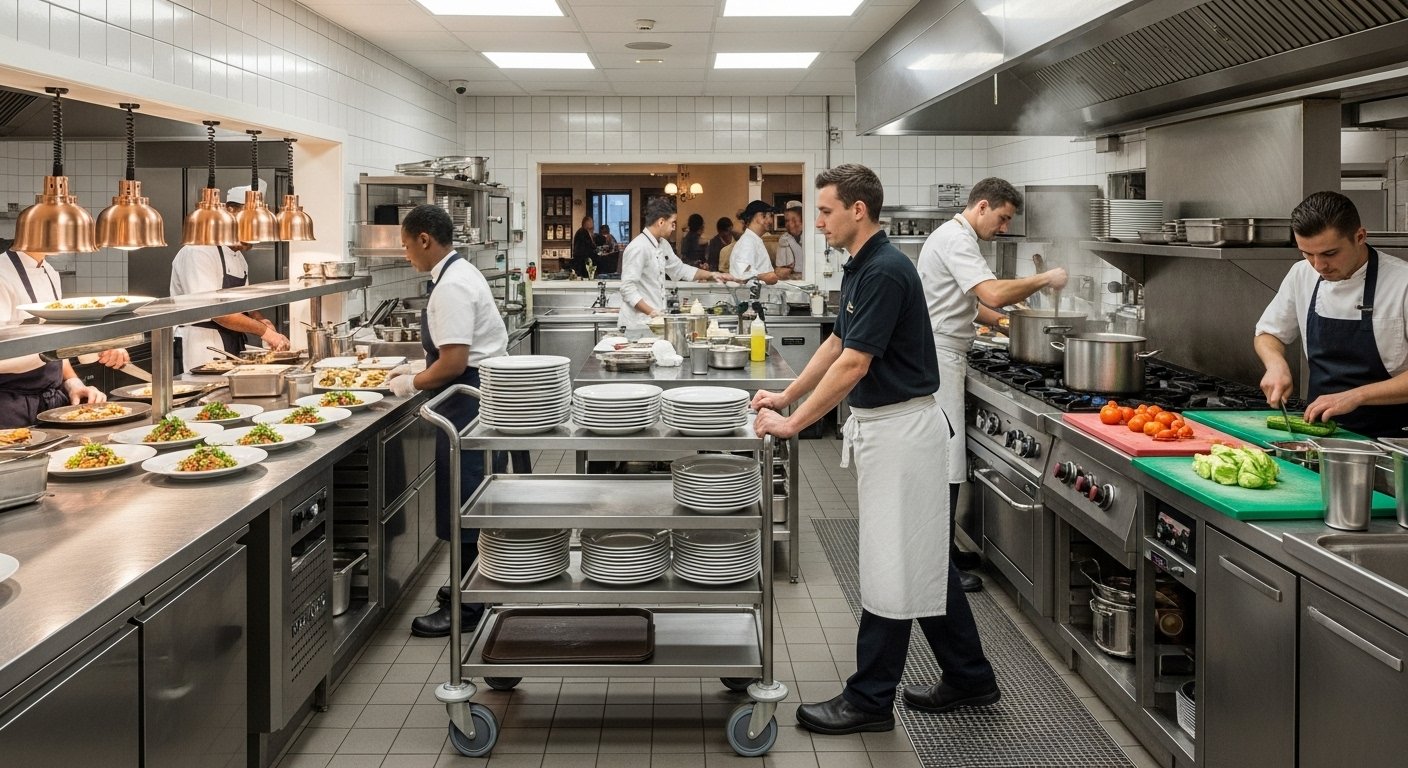
Afruimwagens are remarkably versatile, serving as essential tools across multiple sectors due to their adaptability, durability, and efficiency. Below is a detailed exploration of their practical applications and everyday uses in various industries:
1. In Agriculture:
Afruimwagens are indispensable for transporting crops, livestock, feed, manure, or silage, streamlining tasks like cultivation, barn cleaning, and logistics. They excel in rural communities, such as those in KwaZulu-Natal, where farmers like Thabo Mthembu use them to boost yields by 30% through faster crop transport and efficient manure spreading for sustainable practices. Specialized models with attachments like plows or seeders also support citrus farming and other crop-specific tasks.
2. In Horeca (Hotels, Restaurants, Catering):
Service afruimwagens, often made of stainless steel or durable plastic, are used for clearing dishes, trays, and cutlery in busy kitchens or event settings. They improve service speed by up to 30%, enhancing client satisfaction and organization during peak hours in hotels or restaurants.
3. In Construction and Industrial Settings:
Afruimwagens move materials, debris, or tools across uneven ground, enhancing site safety and productivity. They streamline inventory flow in warehouses or on assembly lines, reducing physical strain and improving operational efficiency.
4. In Urban and Municipal Uses:
Electric and hybrid afruimwagens are employed for garbage pickup, recycling, and public transit logistics, addressing environmental objectives and public health. For instance, a pilot program in Ghent used electric models to reduce CO₂ emissions by 15%.
5. Other Applications:
Afruimwagens serve in tourism for navigating wild terrains, in hospitals for transporting medical tools or linens, in warehouses for moving boxes or finished goods, and in schools or cafeterias for meal tray management. They also feature in cultural events like parades and festivals, carrying decorations or supplies.
These diverse applications highlight afruimwagens’ role as multifunctional tools, transforming workflows across industries with their robust design and adaptability.
How to Choose the Right Afruimwagen for Your Needs
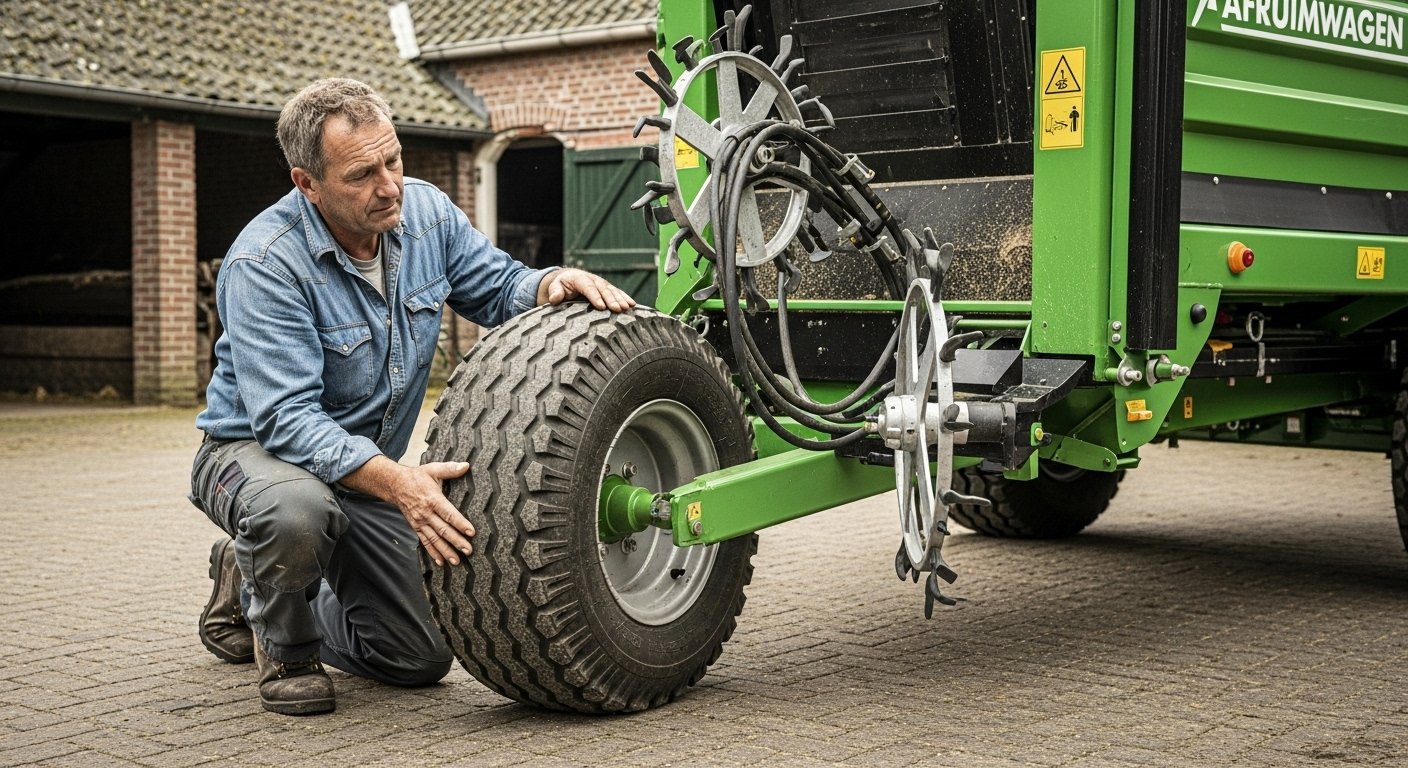
Selecting the ideal afruimwagen requires careful consideration of various factors to ensure it aligns with your specific operational demands, terrain, and budget. Here’s a comprehensive guide to making an informed decision:
Factors to Consider:
- Terrain: Evaluate whether you’ll operate on rugged fields, uneven construction sites, or smooth urban surfaces. For example, standard or hydraulic afruimwagens with large, high-traction wheels are best for rough terrains, while compact models suit polished floors or tight spaces.
- Payload and Capacity: Assess the weight and volume of materials (e.g., crops, manure, dishes, or debris) you need to transport. Tipper models are ideal for bulk commodities, while flatbeds handle general loads.
- Size and Configurations: Consider the space available. Compact afruimwagens are perfect for small farms or urban settings, while larger utility models cater to expansive agricultural or industrial tasks.
- Budget: Balance initial costs with long-term savings. Eco-friendly electric models may cost more upfront but reduce fuel expenses, while basic models are more affordable for smaller operations.
- Intended Use: Identify specific tasks like spreading manure, clearing dishes, or hauling equipment. Specialized attachments or features like hydraulic systems are crucial for task-specific needs.
Key Evaluations:
- Wheel Types and Sizes: Choose durable wheels with good traction for rough terrains or noise-reducing wheels for hospitality settings.
- Material Quality: Opt for high-grade materials like stainless steel, polypropylene, or ABS for durability and hygiene, especially in horeca or waste management.
- Features and Accessories: Look for brakes, electric power options, or modular bins for added functionality. GPS integration or smart sensors enhance precision in large-scale operations.
- Brand Reputation and Warranty: Research trusted brands and check warranty terms for reliability and after-sales support.
Buyer’s Guide:
- Review customer feedback and expert recommendations to gauge real-world performance. For instance, farmers praise hydraulic models for manure spreading, while horeca users value compact carts for ease of use.
- Avoid underpowered models that can’t handle your load or over-engineered ones that inflate costs unnecessarily. Check product specifications for capacity, towing ability, and terrain compatibility to make an informed decision.
By carefully assessing these factors, you can select an afruimwagen that maximizes efficiency and meets your operational needs.
Proper Maintenance, Care, and Safety Tips
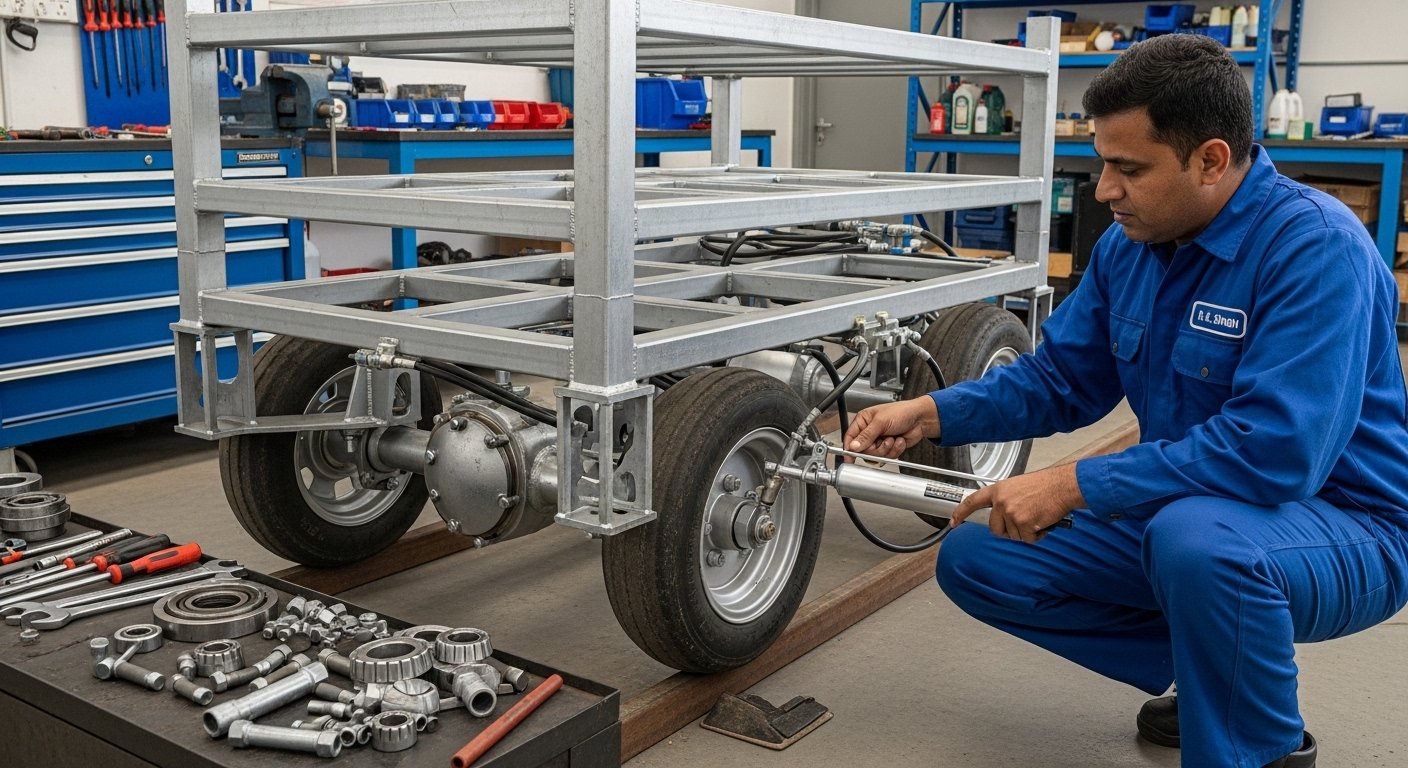
To ensure afruimwagens deliver optimal performance and longevity, regular maintenance, proper care, and adherence to safety protocols are essential. Below are key guidelines to keep these versatile vehicles in top condition and ensure safe operation across industries:
1. Regular Inspections:
Routinely check critical components like tires, brakes, hydraulic systems, and axles for signs of wear or damage. Early detection of issues, such as worn tires or hydraulic leaks, prevents costly repairs and ensures smooth operation on challenging terrains.
2. Cleaning and Lubrication:
Wash afruimwagens regularly to remove dirt, debris, or corrosive materials, especially after handling manure, silage, or food items. Lubricate moving parts, such as axles and hinges, with grease to reduce friction and prevent rust or mechanical issues. This is particularly crucial for stainless steel carts in horeca settings to maintain hygiene.
3. Storage and Engine Care:
Store afruimwagens in sheltered areas to protect them from harsh weather conditions like rain or extreme heat, which can cause rust or damage. For motorized models, follow manufacturer guidelines for engine maintenance, including timely oil changes and adherence to service intervals to ensure reliability and fuel efficiency.
4. Safe Usage Practices:
- Conduct pre-operation checks to verify brakes, weight distribution, and load capacity to avoid tipping or control loss.
- Ensure even weight distribution to maintain balance, particularly when handling heavy loads like crops or construction materials.
- Avoid overloading, which can strain components and lead to accidents.
- Maintain visibility and use clear communication or safety signals in crowded environments like restaurants or construction sites.
- Equip operators with personal protective equipment (PPE) and provide staff training on proper handling, especially for hydraulic or electric models.
5. Common Mistakes to Avoid:
- Neglecting maintenance schedules, leading to breakdowns or reduced lifespan.
- Using the wrong afruimwagen model for specific terrains or tasks (e.g., a compact model for heavy agricultural loads).
- Ignoring safety signals or overloading, which risks tipping or equipment damage.
- Mixing clean and dirty items on service carts, compromising hygiene in horeca settings.
By following these maintenance and safety practices, afruimwagens can remain reliable, efficient, and safe, maximizing their value across agricultural, hospitality, and industrial applications.
Case Studies and Success Stories
Afruimwagens have transformed operations for businesses and individuals across various sectors, showcasing their practical impact through real-world success stories. Below are compelling examples and testimonials highlighting their effectiveness, drawn from diverse applications and regions.
Real-World Examples:
- Thabo Mthembu, KwaZulu-Natal Farmer: Thabo, a citrus farmer, integrated a hydraulic tipper afruimwagen into his operations. By streamlining the transport of fruit and organic waste, he increased crop yields by 30% and reduced labor costs, allowing his farm to expand into new markets.
- Maria Nkosi, Limpopo Livestock Farm: Maria adopted a manure/silage afruimwagen to manage livestock waste efficiently. The specialized spreading mechanism cut her barn cleaning time by 25%, enabling her to focus on crop quality and sustainable soil management.
- John van der Merwe, Western Cape: John used a utility afruimwagen with GPS-integrated attachments for precision irrigation and planting. This reduced water usage by 20% while boosting productivity, demonstrating the value of smart technology in modern farming.
Industry-Specific Success:
- Dutch Potato Farm: A farm in the Netherlands implemented hydraulic afruimwagens, reducing their harvest cycle by 20% through faster crop transport and unloading. This efficiency allowed them to scale operations and compete in a demanding market.
- 5-Star Hotel in Ghent: By using compact service afruimwagens, the hotel achieved 30% faster table clearing during peak hours, improving guest satisfaction and streamlining kitchen operations with stainless steel carts designed for hygiene.
- Urban Waste Pilot in Ghent: A municipal program adopted electric afruimwagens for recycling and garbage collection, cutting CO₂ emissions by 15% and enhancing public health through quieter, eco-friendly operations.
Testimonials:
- “The afruimwagen’s durability and ease of use have been a game-changer for our farm. It handles heavy loads effortlessly and saves us hours daily.” – Farmer, KwaZulu-Natal.
- “Our restaurant runs smoother with afruimwagen clearing carts. They’re sturdy, hygienic, and keep our service seamless during rush hours.” – Hotel Manager, Ghent.
- “The electric model we use for waste collection is quiet and efficient, aligning perfectly with our city’s sustainability goals.” – Municipal Worker, Belgium.
These success stories underscore afruimwagens’ transformative impact, from boosting agricultural yields to enhancing hospitality and urban sustainability.
Environmental and Sustainability Aspects
Afruimwagens play a significant role in promoting environmental sustainability, aligning with modern demands for eco-friendly practices across industries. Their design and functionality contribute to reducing environmental impact while enhancing operational efficiency. Here’s how:
1. Eco-Friendly Features:
Electric and hybrid afruimwagens are powered by sustainable energy sources, such as electric motors or solar charging panels, significantly reducing carbon footprints and emissions compared to traditional fuel-based vehicles. Many models incorporate recyclable or biodegradable materials, like high-grade plastics or aluminum alloys, supporting a circular economy. Noise-reduction wheels and quieter operations make them ideal for residential or sensitive environments.
2. Role in Sustainable Agriculture:
Afruimwagens, particularly manure and silage wagons, facilitate the recycling of organic waste into natural fertilizers, improving soil quality and biodiversity while minimizing reliance on chemical inputs. For instance, precise spreading mechanisms ensure even distribution, reducing waste and enhancing soil fertility for healthier crops.
3. Broader Impact:
By integrating smart technologies like GPS tracking and AI-based route optimization, afruimwagens optimize resource use, such as fuel and water, in agricultural and urban settings. Programs like the Ghent waste pilot demonstrate a 15% reduction in CO₂ emissions through electric models, contributing to public health and environmental goals. Their energy-efficient designs also lower operational costs, aligning with global sustainability objectives and reducing landfill pressure through effective waste management.
These eco-conscious features make afruimwagens vital tools for businesses aiming to balance productivity with environmental responsibility, paving the way for greener operations in agriculture, hospitality, and municipal services.
Cultural and Symbolic Significance
Afruimwagens are more than just practical tools; they carry deep cultural and symbolic significance, rooted in historical traditions and continuing to play a meaningful role in modern contexts.
1. Historical Relevance:
Originating in regions like the Low Countries (Netherlands and Belgium) and parts of Africa, afruimwagens were integral to rural life, used in ancient customs for transporting crops, hay, and goods during harvest times. They symbolized tenacity, resourcefulness, and social standing, often crafted with local materials to reflect community ingenuity. In European traditions, particularly Dutch folklore, these carts were featured in rituals and festivals, representing communal pride and the backbone of agricultural societies.
2. Modern Cultural Uses:
Today, afruimwagens maintain their cultural relevance in events like parades, rural weddings, and seasonal festivals, where they are adorned as symbols of heritage and renewal. In the Netherlands, for instance, decorative afruimwagens are used in New Year’s parades or traditional ceremonies, linking past agricultural practices with contemporary celebrations. They also serve as tourist attractions, showcasing local culture and history while navigating wild terrains, blending functionality with cultural storytelling.
By preserving these ties to heritage while adapting to modern needs, afruimwagens bridge the gap between tradition and innovation, reinforcing their value as both practical and symbolic assets in communities worldwide.
Challenges, Limitations, and Common Mistakes
While afruimwagens are highly versatile and efficient, they come with certain challenges and limitations that users must address to maximize their benefits. Understanding these potential issues and avoiding common mistakes can ensure optimal performance.
Potential Issues:
- High Initial Costs: Advanced models, such as those with hydraulic systems or electric motors, can have significant upfront costs, which may be a barrier for small-scale farmers or businesses with limited budgets.
- Maneuvering in Tight Spaces: Larger afruimwagens, like flatbed or tipper models, may struggle in confined areas, such as urban settings or small farms, where compact designs are more suitable.
- Specialized Maintenance Needs: Features like hydraulic systems, GPS integration, or electric components require specialized knowledge for repairs, which can increase maintenance costs if not handled properly.
- Regulatory Limits: In some urban or municipal settings, regulations on vehicle emissions or noise levels may restrict the use of certain afruimwagen models, particularly non-electric ones.
Common Mistakes:
- Overloading: Exceeding the weight capacity can lead to tipping, component strain, or accidents, especially on uneven terrains.
- Neglecting Inspections: Skipping regular checks on tires, brakes, or hydraulic systems can result in unexpected breakdowns or reduced lifespan.
- Using in Wrong Terrains: Deploying a compact afruimwagen for heavy agricultural loads or a large model in tight spaces can compromise efficiency and safety.
- Low Awareness of Benefits: Some users fail to leverage advanced features like GPS or modular attachments, limiting the afruimwagen’s potential.
Solutions:
- Invest in proper training to understand model-specific features and maintenance needs.
- Choose the right afruimwagen based on terrain, load, and task requirements, consulting customer reviews or expert recommendations.
- Implement preventive care, such as routine cleaning and lubrication, to avoid costly repairs and ensure compliance with local regulations.
Addressing these challenges through informed selection and diligent maintenance allows users to fully harness the capabilities of afruimwagens while minimizing drawbacks.
Future Trends and Innovations in Afruimwagens
The future of afruimwagens is poised for exciting advancements, driven by technological innovation and growing demands for sustainability and efficiency across industries. These developments promise to enhance their adaptability, effectiveness, and environmental friendliness, ensuring they remain indispensable in a competitive landscape.
Emerging Developments:
- Automation and AI: Future afruimwagens are expected to integrate autonomous navigation systems and AI-driven route optimization, improving logistics in agriculture and urban settings. Smart sensors will monitor load conditions in real-time, enhancing precision and reducing waste.
- Lightweight Materials: Advances in materials like carbon composites and high-strength alloys will reduce vehicle weight, improving fuel efficiency and maneuverability without compromising durability.
- Electric and Solar-Powered Models: Electric afruimwagens with solar charging panels and regenerative braking systems are gaining traction, offering zero-emission alternatives for eco-conscious operations in farming, waste management, and hospitality.
Predictions:
- Autonomous Carts: Fully autonomous afruimwagens will streamline tasks like crop transport or dish clearing, reducing labor costs and human error.
- Modular Designs: Enhanced modularity will allow seamless swapping of attachments, catering to diverse tasks from plowing to waste sorting with a single base unit.
- Integration with Precision Farming and Smart Cities: Afruimwagens will sync with IoT systems for precision agriculture (e.g., optimized planting schedules) and smart city logistics (e.g., waste collection routes), boosting productivity and sustainability.
Impact on Sectors:
These innovations will revolutionize agriculture by maximizing yields through data-driven operations, enhance horeca efficiency with quieter, automated service carts, and support urban sustainability goals by reducing carbon footprints and landfill pressure. The adoption of eco-friendly designs and smart technology will position afruimwagens as leaders in the evolving landscape of agriculture, hospitality, and municipal services.
These trends highlight afruimwagens’ potential to adapt to modern challenges, ensuring they remain vital tools for future-ready operations.
Conclusion
Afruimwagens have proven themselves as versatile, robust, and innovative tools that bridge tradition and technology, transforming operations across agriculture, hospitality, construction, and urban management. From their historical roots in rural communities to their modern evolution with electric motors, AI integration, and eco-friendly designs, they offer unmatched benefits: enhanced productivity through faster workflows, durability for long-term reliability, and sustainability via reduced emissions and waste recycling.
Their applications—whether hauling crops in KwaZulu-Natal, clearing tables in a Ghent hotel, or supporting urban waste management—demonstrate their adaptability to diverse needs. By addressing challenges like high costs through informed selection and proper maintenance, businesses can maximize their investment.
Invest in an afruimwagen today to streamline your operations, boost efficiency, and contribute to a sustainable future. As these vehicles continue to evolve with automation and smart technology, they remain essential allies for success in a competitive landscape.
Explore More Topic: Simbramento
Frequently Asked Questions (FAQs)
What are the main types of afruimwagens?
Afruimwagens include standard/flatbed models for general transport, tipper/hydraulic versions for bulk unloading, compact models for tight spaces, utility/multifunctional units with swappable attachments, and specialized types like manure/silage wagons, service carts for horeca, and eco-friendly electric/hybrid models.
How do afruimwagens improve farming efficiency?
They streamline tasks like transporting crops, manure, or equipment, reducing labor costs and time. For example, farmers like Thabo Mthembu have reported 30% higher yields due to faster workflows and precise material handling with hydraulic or GPS-equipped models.
What maintenance is required for afruimwagens?
Regular inspections of tires, brakes, and hydraulic systems, along with cleaning to prevent corrosion and lubrication of moving parts, are essential. Store in sheltered areas and follow manufacturer guidelines for engine care to ensure longevity.
Are there eco-friendly afruimwagen options?
Yes, electric and hybrid models with solar charging panels or regenerative braking reduce emissions and noise, ideal for sustainable farming or urban waste management, as seen in Ghent’s 15% CO₂ reduction pilot.
How do I choose an afruimwagen based on budget and needs?
Assess terrain, payload, and tasks (e.g., farming vs. horeca). Check wheel types, material quality (stainless steel for hygiene), and features like GPS. Read customer reviews and avoid underpowered or over-engineered models to balance cost and functionality.
What are their common uses?
Afruimwagens are used in agriculture (crop/manure transport), horeca (dish clearing), construction (material handling), urban waste management, hospitals (tools/linens), and cultural events (parades), offering versatility across sectors.
What future innovations can we expect?
Expect autonomous carts, AI-driven route optimization, lightweight materials, and solar-powered models, enhancing precision farming and smart city logistics for greater efficiency and sustainability.
What is their cultural significance?
Rooted in Dutch and African traditions, afruimwagens symbolize resilience and community pride, appearing in festivals, parades, and weddings as decorative symbols of heritage and renewal.
Can afruimwagens reduce operational costs?
Yes, their durability minimizes repairs, and electric models cut fuel costs. Multifunctional designs reduce the need for multiple tools, offering long-term savings for businesses.
Are afruimwagens safe to use?
With proper maintenance, even weight distribution, and safety features like brakes and reflective surfaces, they minimize risks. Training and PPE further ensure safe operation in busy or rugged environments.

